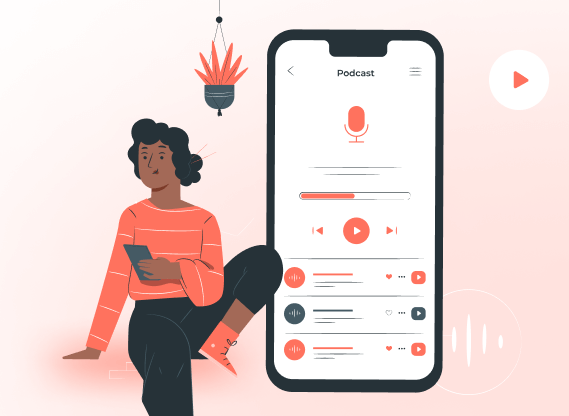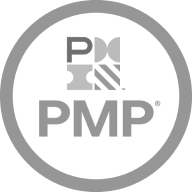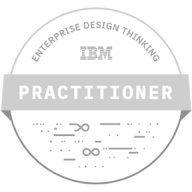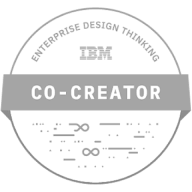
Want to know more? — Subscribe
Did you know that music retail revenue in the US grew by 27%, with 84% generated by streaming services?
In addition, paid subscriptions like Spotify and Apple Music have grown and now comprise more than two-thirds of total paid subscriptions market revenue (which is, just imagine, $4.6 billion). Moreover, more than 80 million paid subscriptions were recorded for the first time, which means the popularity of the market and its easy entry threshold.
The Softermii team has deep experience in building music app development projects from scratch, similar projects can be found in our portfolio. That’s why, in this article, you’ll learn everything you need to know about developing a music streaming app: from its key features to the full breakdown of the development cycle.
Music streaming app market trends
To build a music streaming app, you need to study the market and trends to create a product that will hit the mark.
- The music streaming app market is standing its ground and isn’t going to give up. According to MIDiA’s annual music subscriber market shares report, the base of music subscribers strongly grows and is higher than in the previous year (by 26,4%).
- Spotify continues to hold the biggest market share (33%), followed by Apple Music (15% market share). According to its report, Spotify controls just under a third (31%) of the global market, more than double that of Apple AAPL -1.8% Music (15%). At the same time, Spotify has a bigger market share than Apple Music and Amazon Music combined and remains the leader in this niche.
Read Also: NFT Marketplace Development Guide
- According to the report, fans worldwide listen to music for 18.4 hours (368 three-minute tracks) weekly. Because of streaming, fans can customize their listening choices and choose their favorite songs and artists, as well as create their own playlists (62% listen to their playlists more than once a week).
- Guardian states that public opinion has a large financial impact on music streaming services. A nice proof is a podcast by Joe Rogan, which featured discussions about COVID-19 conspiracy theories and, because of this, Spotify has faced criticism for sharing misinformation.
Key Music Streaming Apps
Before getting to music streaming app development, let’s do a brief review of the most popular music streaming apps and study some of the statistics about their users, number of songs, and overall popularity.
Spotify
Spotify is a digital music, podcast, and video platform where you can listen to millions of songs and get access to content from creators all over the world. Most of the basic features are free, but you can always upgrade to Spotify Premium.
Source The Verge
Apple Music
Apple Music is a combination of subscription-based music streaming and global radio-like programming. For a flat fee, you unlock a 90-million-song library for any taste.
Source MIDiA Research
Amazon Prime
Amazon Music is a streaming service that is always free with Prime membership. Its members get access to more than 2 million songs and millions of podcasts that you can listen to offline and with skips.
Source Earth Web
Tidal
Tidal is a digital music streaming service that provides access to over 80 million songs and 350,000 videos from music artists from different parts of the world.
Tencent
Tencent Music Entertainment is the leading online music and audio entertainment platform in China, with a dominating market share in music streaming of approximately 80%. It holds the biggest market share among leading music streaming apps in China.
Source Statista
Key features of custom music streaming app
Custom audio streaming app development requires knowledge of the key features and understanding of which of these features are basic. Let’s see what features users consider basic.
Music player
Make sure to include such features as build shuffling, timing, and tuning options to the music player, as well as allow the user to save favorite songs and create personal playlists.
Spatial audio
With the help of spatial audio, artists can mix music to create an immersive audio experience and help users feel themselves inside and around these sounds. Apple, Amazon, and Tidal have already implemented this feature and allowed their users to listen to the music in Dolby Atmos to create a more realistic 360-degree listening effect.
Read Also: Dolby.io Alternatives & Competitors
Lossless
Lossless music streaming is all about listening to the best quality audio ever. A lossless music algorithm ensures that a compressed digital audio file doesn’t lose any quality in the compression process. Apple, for example, has accomplished its promised goals and now supports over 90 million songs in a lossless format.
Library & Playlist
This feature allows users to organize their favorite songs into playlists and sort them based on the genres, popularity, ratings, mood, and year of recording. Make this process smooth and easy because listeners consider the ease of making a playlist one of the most important features in music streaming apps.
Uploading Media
Make sure the uploaded music is stored separately from the playlists, so when a user searches for uploaded songs, you need to switch from the music tab to the section of uploaded music.
Music Videos
People love watching music videos right in the music streaming app, so make sure to include this feature as well. Also, allow playing music videos in the background.
Artists’ page
On the artists’ pages, users can save or download songs of their favorite artist and get notifications when the new song is published.
Play count
Make the user experience more engaging and allow users to see statistics on the number of songs they have listened to. You can even give them certain perks (bonuses, free subscription period) when they reach some milestone.
Radio
Radio is another feature that will come in handy. With the radio streaming feature, users can listen to the radio without ads.
How to Build a Music App like Spotify: A Step-by-Step Guide
To create music streaming application, you need to understand the main stages of this product development.
Discovery and prototyping
The discovery stage includes searching for the product-market fit and executing detailed market research. This stage aims to conduct the target audience research, take user interviews, and make a competitors’ analysis.
After you’ve done all the above, you need to create a product prototype to test your hypothesis on a small group of people. It will help you gather early product reviews and make adjustments to the product in the early stages, saving costs and decreasing the risks.
|
Project scope |
Role |
Timeline |
Projected cost |
|---|---|---|---|
|
User roles descriptions |
PM/BA |
From 8 hours |
From $320 |
|
MVP specifications |
From 40 hours |
From $1 600 |
|
|
Accelerators definition |
From 16 hours |
From $640 |
|
|
Creation of roadmap |
From 24 hours |
From $960 |
|

|
|||
|
Project scope |
Role |
Timeline |
Projected cost |
|---|---|---|---|
|
Competitor analysis |
PM/Designer |
From 24 hours |
From $960 |
|
Sitemap and wireframes |
From 24 hours |
From $960 |
|
|
Concept design |
From 60 hours |
From $2 400 |
|
|
Dynamic prototype |
From 40 hours |
From $1 600 |
|

|
|||
MVP development
After testing your music streaming app prototype, it’s time to create MVP to start a music streaming service. An MVP (a minimum viable product) is the product version that contains only the basic functionality (such as playlists, admin and user interface) to check whether the software can survive in the market. MVP development for the music streaming app has specific rules and principles your tech partner should follow.
Among all, your viable product should be affordable. The very MVP idea is to reach maximum productivity for the minimum budget. Design it carefully. Together with the team, it would be best if you worked on MVP prospecting, lead generation, testing your audience, and finding the balance.
|
Project scope |
Role |
Timeline |
Projected cost |
|---|---|---|---|
|
Logical and infrastructure architecture |
PM/Designer/BA/Dev |
From 16 hours |
From $640 |
|
Tech stack and development plan definition |
From 16 hours |
From $640 |
|
|
Mobile app and web interface development |
From 350 hours |
From $14 000 |
|
|
Source code and tech documentation |
From 40 hours |
From $1 600 |
|

|
|||
Further music streaming app development and scaling
After you’ve proved the need for your product, it’s time to scale your music app MVP. Add extra features step-by-step, and don’t forget to test them on your target audience. Each extra feature requires corresponding tech expertise: for example, registration calls for an ability to integrate Facebook, Instagram, and email in your app. That's why it's important to find a development team experienced in crafting music app features of your choice to build a music streaming app.
Maintenance and support
The maintenance and support stage involves the resolution of defined issues of different complexity, regular monitoring of application performance and optimization, as well as the development of new features and integrations.
|
Project scope |
Role |
Timeline |
Projected cost |
|---|---|---|---|
|
Requirements testing |
PM/QA |
From 24 hours |
From $960 |
|
Test documentation and planning |
From 32 hours |
From $1 280 |
|
|
User testing |
From 80 hours |
From $3 200 |
|
|
Feedback gathering |
From 16 hours |
From $640 |
|

|
|||
Best Music App Development Technologies
To create a music streaming app, you need to find a professional team specializing in the development of such apps. For sure, you need to hire the following specialists:
- Business analyst
- Project manager
- UI/UX designer
- Android developers
- iOS developers
- Back-end developers
- QA engineer
You can consider the following technologies:
- Programming languages: Python, Java
- Hadoop frameworks, Apache Storm, Hub Framework
- Server: Nginx
- Cloud storage: Amazon S3, Google BigQuery
- CDN: Amazon Cloudfront
- Database: PostgreSQL, Cassandra
- Tools: Bootstrap
- DevOps: Docker, Datadog, TestFlight
Remember that all the features in different modules should be consistent and work as a whole system. It’s necessary to describe the patterns and techniques of your web and mobile version before building an application. Music streaming app architecture provides you with a roadmap so that you end up with a well-structured app, and software design patterns will help you build an application that works consistently on all devices.
Source Medium
Music Streaming App Development Cost
Let’s break down the process of developing the music streaming app into distinct stages and review how much time and cost each stage takes.
Estimation, Research & UI/UX design
Time: From 80 hours
Cost: From $3 200
The discovery phase is a pillar of any development process. During this stage, our team analyzes all your requirements and needs to start a music streaming service. After that, we create a special document with all the technical and non-technical specifications.
Development
Time: From 350 hours
Cost: From $14 000
During this stage, we start working on your project. Together we define the scope of work and features to start with. The development process is divided into sprints with a certain timeframe and primarily defined goals. Time and cost depend on the type of features you want to implement. Take a look at the examples of such features below.
A basic streaming app
|
Features |
Timeline |
Cost |
|---|---|---|
|
Features |
Timeline |
Cost |
Recommendation |
From 80 hours |
From $3 200 |
Preferences |
From 80 hours |
From $3 200 |
Personalized Notifications |
From 40 hours |
From $1 600 |
Social Sharing |
From 60 hours |
From $2 400 |

|
||
Advanced features
|
Features |
Timeline |
Cost |
|---|---|---|
|
Features |
Timeline |
Cost |
|
Lossless |
From 175 hours |
From $7 000 |
|
Personalized Playlists |
From 120 hours |
From $4 800 |
|
Spatial Audio |
From 80 hours |
From $3 200 |

|
||
Testing and maintenance
Time: From 120 hours
Cost: From $4 800
Testing is an essential stage, the goal of which is to eliminate all the errors and bugs and make the product operate the way it’s intended. During this phase, QA engineers find and fix bugs with the help of automated or manual testing.
|
Stages |
Time |
Cost |
|---|---|---|
|
Estimation and research |
From 80 hours |
From $3 200 |
|
Development |
From 350 hours |
From $14 000 |
|
Testing |
From 120 hours |
From $4 800 |
|
Total |
From 550 hours |
From $22 000 |

|
||
Please note, the prices will vary depending on whether you want to start with a music streaming app MVP or build an advanced application. If you want to get a custom quote, contact our team. We will analyze your requirements and provide you with a personalized roadmap.
How to monetize music streaming app
Without monetization, your product won’t pivot. Here are the most effective ways to monetize your music streaming app.
- Advertising
Advertising is one of the easiest ways to monetize your platform if you have a large number of users. For example, Spotify makes 91% of its revenue from subscriptions and the other 9% from advertisements from brands, agencies, small businesses, artists, labels, concert promoters. Spotify keeps 30% of its revenue and divides the remaining amount between licensing, music deals, and paying to the artists.
- Subscriptions
Spotify, Apple Music, and Tidal also use subscriptions to monetize their platforms. There are different types of subscriptions, for example; Apple Music provides the following ones:
- Premium — $10 per month. Сovers one account for $10 a month. There are no ads, and you can skip songs as much as you want.
- Family — $16 per month. Covers 6 accounts allows you to skip songs, download them, share a curated playlist, and access the Spotify Kids app.
- Duo — $13 per month. A good choice for couples and roommates. Users still have access to the premium features: no ads, on-demand playback, offline listening, and unlimited song skips.
You can implement all the features we have mentioned above as an additional feature for your app. We recommend including it in the advanced version when your app will start to gather first users.
Read Also: How to Build a Subscription App like Patreon
Softermii’s Experience In Music Streaming App Development
Softermii has deep experience in developing music and video streaming apps of different types. Let’s dive deeper into what projects we have developed and what problems they solve.
HIPAA audio and video conferencing app
HIPAA Video is a brand new web-based communications and video conferencing application for accessible healthcare and medical advice.
Challenge
The main task was to update the platform with new technologies and include functionality for multiple-peer use cases involving big groups of medical professionals and other recipients, for instance, an entire doctor board meeting for special diagnoses. To improve the interaction between doctors and patients, it was also necessary to create efficient user flows with texting, and scheduling and implement it into a HIPAA-compliant video app.
Solution
HIPAA video and audio has enabled doctors and patients to organize appointments, exchange messages, and store all important messages. Also, we have implemented a full-on live video exchange, as well as encoder implementations, effective echo cancellation, and browser support to ensure a fast and high-quality video-streaming solution.
Results
The platform we have created is a cloud-based communications platform compliant with HIPAA as well as European Health Security norms, with the help of which physicians and patients can effectively communicate and manage the whole work process online.
Hybrid and virtual events platform
Events10x is a service provider with the help of which you can organize both online and hybrid events, such as conferences and exhibitions. Users can organize events through video calls, messaging, and broadcasting to over 15000 people.
Challenge
This platform required a lot of custom features and load testing; that’s why our main challenges were: tight deadlines, integration of external tools such as ticket aggregator with 3-rd party services in Dubai, Microsoft Azure, and Negenius, which we had to customize for the needs of this platform.
Solution
We have decided to develop a custom engine for hosting video calls. We made it applicable for various industries, and this white label solution is fully customizable.
Results
We have developed an application for education, graduation, expo, and conferencing online events. Its users can experience events the same way as a personalized offline event, enjoy networking and develop their business, no matter what part of the world they live in.
Read Also: How to Create a Hybrid Event App
Contact Softermii Team to Make an Audio Streaming App
Music streaming app development is not a piece of cake unless you know the market and your target audience. Before jumping into creating the list of features and integration, ask yourself what problem you’re solving and how.
Softermii developers know how to create a music app, and we'll be glad to deliver this service for you! Contact our experts if you need more information or want to create a custom streaming platform with Spotify-like features and success on the music market.
Frequently Asked Questions
Before creating a music streaming app, you need a license for using music content on your website. The license you need is the Public Performance Rights handled by the American Society of Composers, Authors, and Publishers, or Broadcast Music Incorporated. If you don’t have such a license, you will need to pay a fine of a minimum of $750 per song.
You can consider AWS or use the SDK or API provided by Spotify or SoundCloud. You can also create your own data storage to not be dependent on the third-party application.
It depends on the number of features you want to use and the complexity of the app.
Of course, we will be glad to provide you with specialized developers who will work on your project. You have an opportunity to design a team according to your needs, budget, and requirements.
How about to rate this article?
595 ratings • Avg 4.8 / 5
Written by:
























